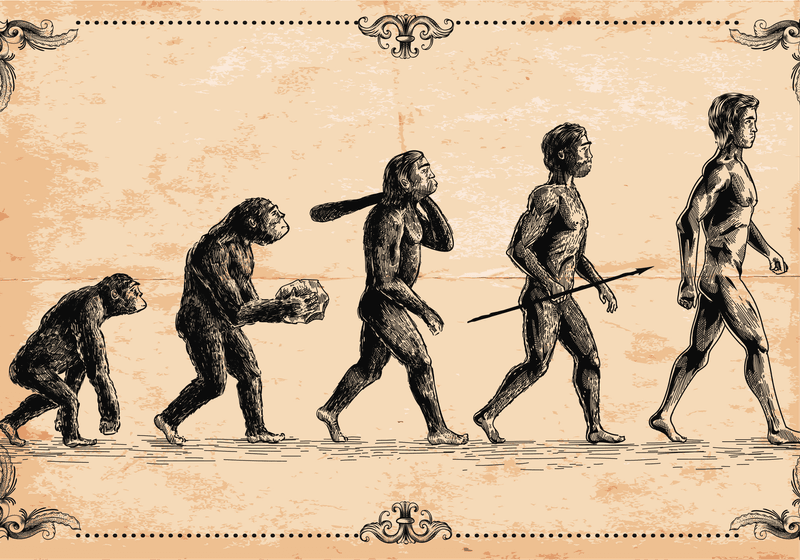Two Changes in Bone Development Allowed Humans to Stand on Two Legs

Scientists have long suspected that human bipedalism is possible thanks to the pelvis’s unique shape. Now, they’ve uncovered the mechanistic and genetic bases of this evolutionary novelty.
Humans are the only primates that walk on two legs. Scientists believe that their uniquely shaped pelvis, the bones that connect the spine to the legs, makes this possible. However, researchers didn’t know what genetic changes promoted bipedalism—until now.
“The evolution of novelty—the transition from fins to limbs or the development of bat wings from fingers—often involves massive shifts in how developmental growth occurs,” said Terence Capellinian evolutionary geneticist at Harvard University, in a statement. “Here we see humans are doing the same thing, but for their pelves.”
Capellini’s team recently discovered the genetic bases for bipedalism by studying how the ilium, the largest bone in the pelvis, forms in humans and other primates during embryonic development.1 Using histology and sequencing approaches, the team identified two key changes that contributed to the characteristic shortening and widening of the human ilium: a perpendicular shift in the orientation of cartilage growth and a delay in ossification, the process by which cartilage hardens into bone. They also found several transcription factor-encoding genes that likely regulate these processes. They published their findings in Nature.
Scientists recently discovered that the ilium, the biggest bone in the pelvis, grows in a different orientation and hardens more slowly in bipedal humans than in quadrupedal primates. These changes make the human ilium unusually short and wide, allowing humans to stand and walk on two legs.
Behnoush hajian
Most bones—with few exceptions, such as the skull—form from undifferentiated cartilage cells. These would later differentiate, then harden to become bones.
First, Capellini’s team investigated cartilage formation in the ilium during early embryonic development. The researchers obtained human embryos that were donated from first trimester pregnancy terminations as well as samples from mice and other primates. Then, they analyzed slices of the developing ilium tissue under a microscope.
At first, undifferentiated human cartilage cells lined the longitudinal (head-to-toe) axis, just like in mice and other primates. But around gestational day 53, the growth axis of human cartilage cells shifted perpendicularly, making the pelvis simultaneously shorter and wider.
“I was expecting a stepwise progression for shortening (the pelvis) and then widening it. But the histology really revealed that it actually flipped 90 degrees—making it short and wide all at the same time,” Capellini said.
Using single-cell and spatial transcriptomics, the researchers found that differentiated cartilage cells spread transversely (perpendicular to the head-to-toe axis), which further confirmed their histology results. Then, to determine the molecular pathways that are involved in the shift in growth orientation, the researchers analyzed their transcriptomics data using the computational tool CellChat.2 They found that signaling between the transcription factor SOX9 and parathyroid hormone-related protein (PTHrP) likely regulate this process.
Next, Capellini’s team investigated the other key stage in ilium formation: ossification. The researchers used histology and computed tomography to figure out how this process differed between humans and non-human primates as well as mice. They found that in the human ilium, cartilage ossification occurred up to 16 weeks later than in quadrupeds. Single-cell and computational analyses revealed that the transcription factors RUNX2 and FOXP1/2 likely contribute to this delay.
In this study, the researchers identified for the first time the specific evolutionary changes that allowed humans to stand and walk on two legs. Their findings may also inform how the muscles that support bipedalism evolved.




